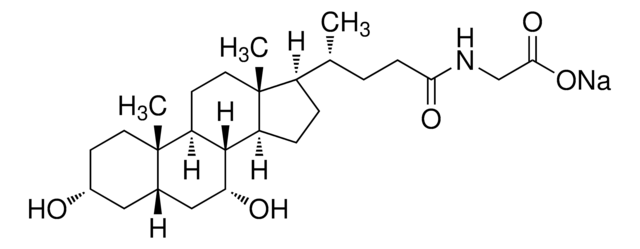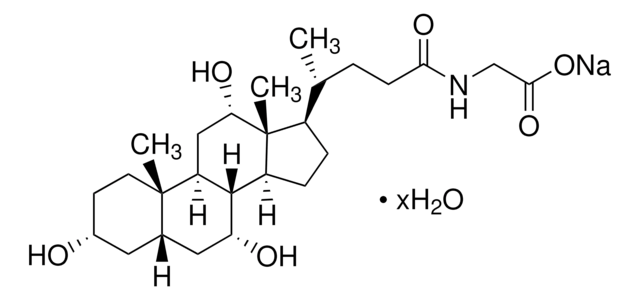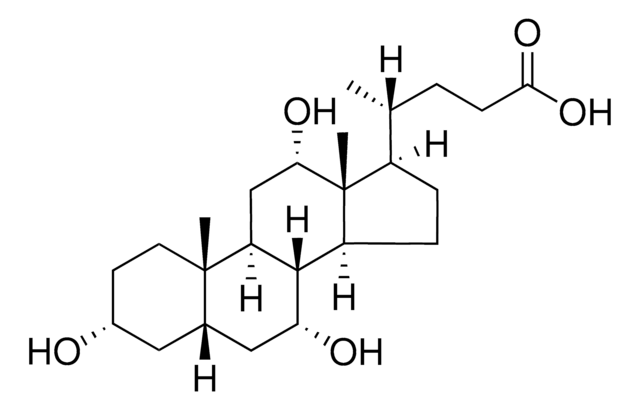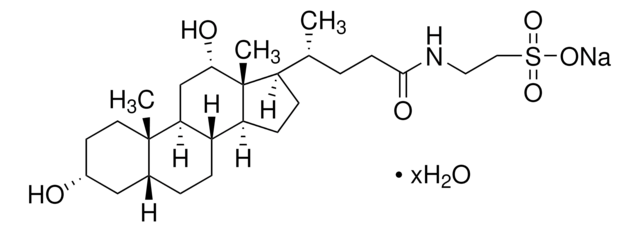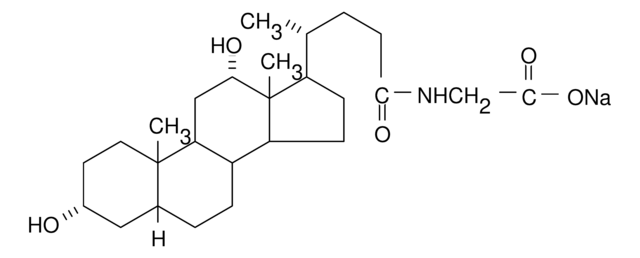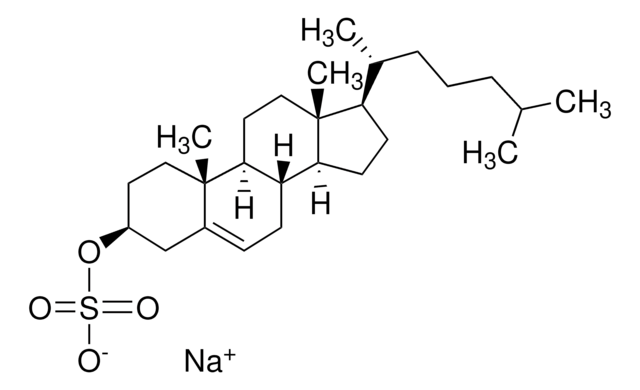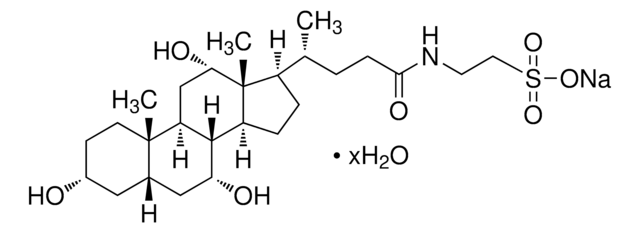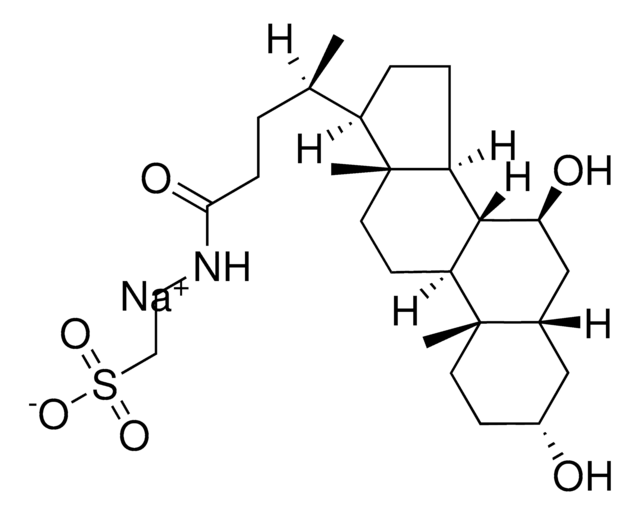Key Documents
50534
Sodium glycochenodeoxycholate
≥97.0% (TLC)
Synonim(y):
3α,7α-Dihydroxy-5β-cholanoic acid N-(carboxymethyl)amide sodium salt, Glycochenodeoxycholic acid sodium salt, N-(3α,7α-Dihydroxy-24-oxocholan-24-yl)glycine sodium salt
About This Item
Polecane produkty
opis
anionic
Poziom jakości
Próba
≥97.0% (TLC)
Postać
powder
masa cząsteczkowa
471.61 g/mol
metody
protein quantification: suitable
rozpuszczalność
H2O: 50 mg/mL, clear, faintly yellow
grupa funkcyjna
amide
ciąg SMILES
[Na+].C[C@H](CCC(=O)NCC([O-])=O)[C@H]1CC[C@H]2[C@@H]3[C@H](O)C[C@@H]4C[C@H](O)CC[C@]4(C)[C@H]3CC[C@]12C
InChI
1S/C26H43NO5.Na/c1-15(4-7-22(30)27-14-23(31)32)18-5-6-19-24-20(9-11-26(18,19)3)25(2)10-8-17(28)12-16(25)13-21(24)29;/h15-21,24,28-29H,4-14H2,1-3H3,(H,27,30)(H,31,32);/q;+1/p-1/t15-,16+,17-,18-,19+,20+,21-,24+,25+,26-;/m1./s1
Klucz InChI
AAYACJGHNRIFCT-YRJJIGPTSA-M
Szukasz podobnych produktów? Odwiedź Przewodnik dotyczący porównywania produktów
Powiązane kategorie
Inne uwagi
Kod klasy składowania
11 - Combustible Solids
Klasa zagrożenia wodnego (WGK)
WGK 3
Temperatura zapłonu (°F)
Not applicable
Temperatura zapłonu (°C)
Not applicable
Środki ochrony indywidualnej
Eyeshields, Gloves, type N95 (US)
Certyfikaty analizy (CoA)
Poszukaj Certyfikaty analizy (CoA), wpisując numer partii/serii produktów. Numery serii i partii można znaleźć na etykiecie produktu po słowach „seria” lub „partia”.
Masz już ten produkt?
Dokumenty związane z niedawno zakupionymi produktami zostały zamieszczone w Bibliotece dokumentów.
Klienci oglądali również te produkty
Nasz zespół naukowców ma doświadczenie we wszystkich obszarach badań, w tym w naukach przyrodniczych, materiałoznawstwie, syntezie chemicznej, chromatografii, analityce i wielu innych dziedzinach.
Skontaktuj się z zespołem ds. pomocy technicznej